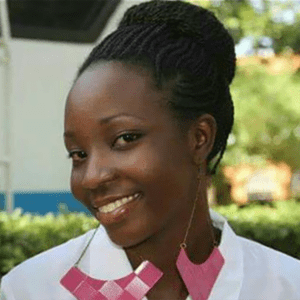USFSP connects with Duke for clean energy

A new community solar program from Duke Energy will allow the University of South Florida St. Petersburg to utilize renewable power for 70% of the school’s total energy demand.
Clean Energy Connection is a solar subscription service that provides businesses and residents with environmental and long-term cost-saving benefits of renewable energy without installing or maintaining expensive equipment.
The program will eventually provide the university with up to 6,753 kilowatts (kW) of clean power at a fraction of what installing the number of solar panels required to produce such a large amount of energy would cost. Winnie Mulamba, sustainability planner for USFSP, said she was excited for how the service could help the campus achieve its environmental goals.
“I was like, ‘yes, this is something we should go for,’” said Mulamba. “Because we don’t have the space to accommodate solar panels on campus in the capacity that would match the demand for our energy needs.”
As USFSP is one of Duke Energy’s largest customers in the area, Mulamba said Duke contacted the university to gauge its interest in participating in the program back in 2020. The sustainability planner immediately requested a slot for USFSP – although she noted it took time to gain the necessary approvals, and the first two solar plants just went online this year.
To participate, businesses and residents sign up for a share of the renewable energy Duke Energy produces across Florida. Monthly subscriptions support the development and maintenance of the company’s Clean Energy Connection portfolio, which will eventually feature ten 74.9-megawatt solar plants.
The first two plants in Citrus and Hardee Counties recently began operation. Sites in Alachua, Bay, Levy and Suwannee Counties will follow in 2023, and Duke Energy plans to open four more locations by 2024.
In addition to a large quantity of renewable energy, USFSP earns bill credits that grow over the subscription’s length, reducing the program’s overall cost. By year six, Mulamba said the savings would cancel out the monthly fees. By year seven, the school expects the credits to outweigh its total investment in the program.
“The credits will be so much that we will be canceling out and still pocketing some money,” said Mulamba. “So, in the end … we will be gaining from this project.
“Technically, the portion that we’ll have – it’s like we’re selling it to Duke, and they’re giving us credits back.”

Winnie Mulamba, sustainability planner for USFSP, said the the new program will provide the campus with 70% of its energy demand.
Mulamba explained that USFSP signed up to receive 6,750 kWs, or about 70% of the school’s energy demand, based on 2019 data. It currently receives a portion of that amount, as only two plants are operational. By 2024, with all 10 sites producing solar power, Duke Energy will provide the school with the full allotment.
The waterfront campus, said Mulamba, is always looking to increase its environmental sustainability. A 110-kW solar array sits atop the parking garage, powering an elevator, lights and electric vehicle charging stations. A 250-kW Tesla battery system stores unused energy the school can use at night or as a backup power source during outages.
Outside USFSP’s Warehouse Laboratory, which houses biology, chemistry and physics labs, sits a 40-kW solar carport that powers about 15% of the building. While Mulamba said school officials discussed the feasibility of adding more solar arrays to rooftops, she said the cost outweighs the amount of renewable energy the campus would receive in return.
“There is no way we would get to 70% renewable energy by having just on-campus solar panels,” said Mulamba. “That’s impossible.
“I think we can make further strides if we do it collectively rather than individually – from the financial standpoint and space limitations.”

Solar energy not used by the parking garage is stored in a 250-kW Tesla battery system.
Mulamba stressed the importance of the downtown campus to be a community leader in an area where “sea level rise is not just a theory, but a reality.” As St. Petersburg grows around the school, she said maintaining a harmonious balance between urban development and environmental stewardship is critical.
In addition to the surrounding water, she noted the amount of sunshine the campus receives annually and said the natural environment provides a unique opportunity for USFSP officials and students to be at the forefront of sustainability efforts.
“It’s great because we get to do research, we get to educate them, we get to train and we get to produce the next generation of who is going to help us on these challenges that we’re already facing,” said Mulamba. “So, I think it’s a win-win for the community and the university.”








Robert Phillips
July 6, 2022at1:18 pm
Is this a renewable off-set program? Does it provide strictly energy to participants? Or does it include a peak demand credit?….curious how that figure is determined?